Banking & Financial Services
Bank of America Increases Commitment to Advance Racial Equality and Economic Opportunity to $1.25 Billion

Expansion will include actions to address racial justice and advocacy for people of Asian descent
Bank of America today announced that it has increased its $1 billion, four-year commitment to advance racial equality and economic opportunity to $1.25 billion over five years. This effort further accelerates work already underway to address racial equality and opportunity through direct actions, investments and work to catalyze similar efforts across the private sector.
To date, the company has made more than $350 million in various investments from its initial $1 billion four-year commitment, announced in June 2020, across its primary focus areas of health, jobs/reskilling, affordable housing and small business. Additional funds announced today will further support investments to address racial justice, advocacy and equality for people and communities of color, including those of Asian descent.
“The urgency we feel to address long-standing issues of inclusion and racial inequality has only increased following the attacks and hate speech directed at Asian people over the last year,” said Bank of America Chairman and CEO Brian Moynihan. “Across the public and private sectors, it is clear that we must do more – to take action, help others convene, and serve as a catalyst for a broad-based, collective response to the critical issues affecting our nation.”
The bank also announced an immediate $1 million commitment and related actions in support of increased advocacy, dialogue and engagement with the Asian American community. Further investments will be identified as part of the company’s expanded five-year effort.
Immediate actions taken to help accelerate and expand pre-existing work include:
- A grant to the Asian Americans Advancing Justice (Advancing Justice) organization to advance the nonprofit’s work to promote civil rights, bystander intervention, in-language advocacy, social services assistance and legal support. This funding supports five Asian Americans Advancing Justice affiliates based in Atlanta, Washington, D.C., Los Angeles, San Francisco and Chicago.
- The addition of Connie Chung Joe, chief executive officer of Asian Americans Advancing Justice – Los Angeles, to serve as a member of Bank of America’s National Community Advisory Council (NCAC), in support of ongoing dialogue and stakeholder engagement with the Asian community in the U.S., and on broad issues of gender and racial equality. Members of the NCAC engage with leaders on Bank of America’s business policies, practices and products in support of employees, clients and local communities.
- Additional support for the National Coalition for Asian Pacific American Community Development (National CAPACD) and The Leadership Conference Education Fund as the two organizations work to advance local community advocacy, training, and resources through community-based efforts.
- Increased philanthropic support through Bank of America’s employee matching gift program. Bank of America employees can double their charitable donations to these three nonprofits and select others; the company’s matching gift minimum has been lowered to $1 for the next 90 days, to expand the impact of their support to the Asian community in the U.S.
“The rising number of attacks against Asian people, including the tragic shootings in Atlanta recently, have served as a stark reminder that we must stand united against discrimination, hate speech and violence,” said Thong Nguyen, vice chairman at Bank of America. “We will not tolerate acts of racism in any form. Today’s commitment builds upon Bank of America’s many years of work in support of inclusion and racial equality.”
“Over the past year, we’ve witnessed increased racism and violence against Asian Americans, underlining the significant need for tools and resources to combat these, as well as a need for culturally specific mental health and victim support resources,” said Chung Joe. “We look forward to working with Bank of America and other national advocacy leaders to advance racial equity and create opportunities for all Americans.”
Bank of America’s work to address racial equity includes participation in the Business Roundtable’s new, multi-year effort to improve equity, diversity and workplace culture, and the bank’s partnership with the Smithsonian Institution in support of its “Our Shared Future: Reckoning with our Racial Past” initiative.
Within the company, Bank of America’s Global Diversity & Inclusion Council includes senior executives from around the world and has been led by Moynihan for more than a decade. The company also connects and supports employees through 11 employee networks and local chapters, including the Asian Leadership Network with more than 11,000 members.
Expanding perspectives is a critical aspect of how Bank of America drives a culture of inclusion. Over the last decade, the company has hosted thousands of courageous conversations with employees, external partners and members of the community to cultivate awareness, inclusion and understanding. Sessions held recently include an event hosted by Bank of America’s Asian Leadership Network regarding allyship to address the current climate of race relations in America, particularly in the Asian and Black/African American communities.
Bank of America’s $350 million in commitments since June 2020 include:
Equity capital investments in 12 minority depository institutions (MDIs) and community development financial institutions (CDFIs) to provide lending, housing, neighborhood revitalization and other banking services to thousands of individuals and small businesses that do not qualify through traditional lenders. This includes a new investment in Central Bank, an Asian American MDI.
- $188 million of investment in 61 private equity funds focused on minority and women entrepreneurs to address the persistent gap in access to growth capital for minority-led businesses.
- Founding partner of the Smithsonian’s “Our Shared Future: Reckoning with Our Racial Past” initiative exploring how Americans understand, experience and confront race.
- More than $22 million in grants to national and local nonprofits supporting workforce development, entrepreneurship, health and emergency needs.
- Partnerships with 21 higher education institutions and major employers to enhance up-skilling and re-skilling for Black and Hispanic-Latino students.
- More than $13 million committed to Native American Communities hardest hit by the coronavirus.
- Expanded opportunities for 50,000 women entrepreneurs at the Bank of America Institute for Women’s Entrepreneurship at Cornell.
- Distribution of 25 million masks to underserved communities across the U.S.
Bank of America also recently tripled its affordable homeownership commitment to $15 billion through 2025 and issued a $2 billion Equality Progress Sustainability Bond designed to advance racial equality, economic opportunity and environmental sustainability. In 2020, the company provided $6.17 billion in affordable housing and economic development financing to help build strong, sustainable communities across the U.S.
Banking & Financial Services
California’s Economic Horizon: Treasurer Ma’s Optimistic Forecast for the Inland Empire

State Treasurer Fiona Ma outlines key initiatives and predicts robust growth for the region, highlighting major projects and economic strategies
By Ken Alan, Freelance Writer for IEBJ
California State Treasurer Fiona Ma presented an optimistic economic forecast for the Inland Empire at the Mid-Year Banking & Financial Industry Outlook. “I spend a lot of my time traveling to all 58 counties to understand their economic development needs and match them with investors,” she explained.
Treasurer Ma highlighted her support for the Brightline West high-speed rail project, which secured $3 billion in funding from President Biden’s Bipartisan Infrastructure Bill and an additional $3.5 billion through private activity bonds (PABs). The 218-mile train, running through the median of Interstate 15, will have stations in Las Vegas, Victor Valley, Hesperia, and terminate in Rancho Cucamonga, where it will connect with the California High-Speed Rail.
While high-speed rail remains controversial due to its high construction costs, Ma argued that such systems are vital solutions to highway gridlock and the high cost of housing in major metro areas. With no significant highway projects in the planning stages, California legislators are considering electronic tolls to manage peak hour traffic. Additionally, the air travel industry continues to struggle with pilot shortages, high fuel costs, safety concerns, and customer service issues, which could be alleviated by increased competition. The persistent barriers to new housing—such as labor costs, high interest rates, and government red tape—also remain formidable.
The construction of the Brightline project is expected to take four years, aiming for completion in 2028 just in time for the Olympic Games in Los Angeles. Ma promised three years of high-paying construction jobs and mentioned plans for new affordable rental units and renovations to existing ones.
Treasurer Ma also referenced the Barstow International Gateway project (BIG) as another economic catalyst for the Inland Empire. Though not directly involved, she noted that the railroad company BNSF had purchased 4,000 acres on the west side of Barstow to develop a major transloading center for international freight from the ports of Los Angeles. This initiative is expected to significantly reduce truck traffic on Southern California freeways and boost San Bernardino County’s economy.
Treasurer Ma oversees a state budget of $3.7 trillion. During the first two years of the pandemic, California realized surpluses of $46 billion and $96 billion, respectively. However, in the third year, the state faced a $50 billion deficit due to layoffs in tech companies, declines in commercial leases, and reductions in individual and corporate tax revenue.
“Our state heavily relies on personal income tax, corporate tax, and sales taxes,” Ma added, noting that as of May, personal income taxes were up $1.4 billion over projections and corporate taxes had risen by $752 million.
Ma invited business leaders to explore the California State Treasurer’s website (www.treasurer.ca.gov) to learn more about state programs that support economic prosperity, including Cal Savers, the Scholarship 529, and CalABLE for disabled workers.
She is currently collaborating with a Blue Ribbon Commission to provide banking services to residents unable to afford traditional banking. Ma emphasized that California’s quality of life remains a competitive advantage over lower-tax states with laws she described as unfriendly to women, minorities, teachers, and doctors. She also noted the high interest from investors in the state.
The Mid-Year Outlook featured a panel discussion with industry leaders on the current and future states of finance. William Wang, MBA, a cash flow expert, encouraged business leaders to consider the opportunity costs against high interest rates, suggesting that a 5% rate change should not significantly impact businesses with a solid capital use strategy. Ursula Garrett, CPA, advised business owners to maintain accurate records to avoid audits and recommended consulting a CPA if contacted by the IRS. Krisante Gunewardena from RE/MAX Diamond Bar noted a recent reduction in lease rates, suggesting it’s an opportune time for office sector investments.
The event was hosted by the Inland Empire Regional Chamber of Commerce at Riverside City Hall’s Grier Pavilion on Thursday, June 6.
Banking & Financial Services
Rate Changes are Looming: Follow Long-Term Game Plan for Winning Capital Decisions

Four key strategies for borrowing during interest-rate uncertainty
By Greg Martinez-Miller
While basketball fans everywhere are following NBA schedules, business owners are tracking the 2024 Fed meeting schedule. But just as true hoops enthusiasts know that game strategy is comprised of more than three-point shots, so should business owners remember that interest rates aren’t the only factor for long-term success. Last December, the Fed said that it expected to cut rates, which are at a 22-year high, three times in 2024. Yet when the central bank met in March, it left rates unchanged, saying it didn’t want to jeopardize lower inflation and healthy economic growth.
So, when the Federal Open Market Committee meets again on April 30-May 1, anticipation will be high. Prognosticators are on every channel, wondering whether the central bank will keep its 5.25-5.5% target rate unchanged again, or if it will announce the first of its three cuts. And if it does, observers ask, how could lower rates impact growth in the U.S. economy?
As a commercial banker who has watched the interest rate scoreboard over the past 16 years, here’s my advice from the sidelines: Stick to your long-term game plan. Put your company in a position to win the balance-sheet game when it comes to the cost of capital.
Here are my four key strategies from my dogeared playbook to keep your head in the game:
1. See the court
Do not focus on interest rates alone for your capital strategy. You need to be aware of other negotiated factors when funding your company’s financial future. Besides interest rates, other terms — loan maturity, advance rates, and guarantees — can offer important value. Many times, it makes good strategic sense to pivot from the interest rate toward other terms to advance your company’s medium- and long-term game plan.
2. Do not overreact to the officials
The Fed is like an economic referee, making calls to control the economy’s pace. Do not lose your cool when the whistle blows. Three rate reductions are still expected this year, but when the central bank plans to make that call, no one knows – yet.
3. Manage the clock
Think about timing when it comes to borrowing. When rates dip, you might consider making a few key borrowing moves to fund some crucial projects and wait to fund other projects later in the game. Consider the purpose of the debt on your balance sheet. Would your company benefit from having a mix of floating and fixed rates? This may allow you to hedge and still potentially benefit from low floating rates, while also maintaining certainty for longer-term, fixed rates.
4. Stick with your game plan
When rates do change, do not throw out your playbook. Instead, call a time out and consult with your banker or interest rate risk advisor to help ensure your borrowing decisions match your company’s long-term plans and goals for continued growth and success.
If you do not need capital, do not borrow just to lock in a lower rate. Interest rates should not be the driving factor when making borrowing decisions. Borrow when you need to; have a good reason for it.
Remember, interest rate changes will always interrupt the flow of your game. But your goal is to ensure that your financial future is deliberate – not purely defensive, based on the ebb and flow of interest rates.
Greg Martinez-Miller is the commercial banking leader for Wells Fargo in Inland Empire. Based in Ontario, Martinez-Miller leads a team of commercial relationship managers in Riverside and San Bernardino Counties. The views expressed present the opinions of the author on prospective trends and related matters in middle market banking trends as of this date, and do not necessarily reflect the views of Wells Fargo & Co., its affiliates and subsidiaries.
Banking & Financial Services
2024 Inland Empire Financial Summit: A Milestone in Economic Empowerment
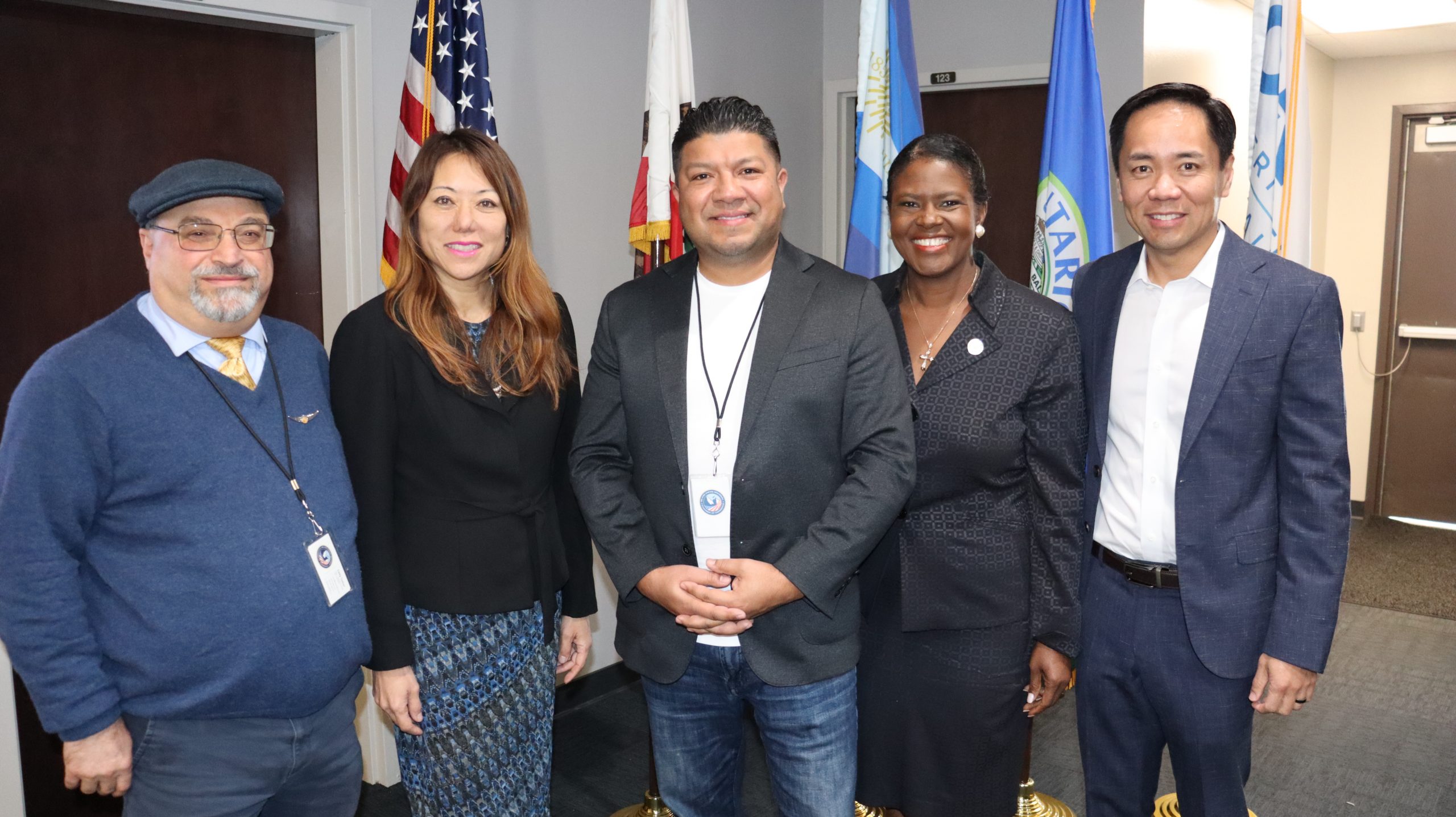
Uniting Leaders and Innovators for a Thriving Economic Future in Southern California’s Inland Region
The Inland Empire Regional Chamber of Commerce proudly announces the resounding success of the 2024 Financial Industry Update, a landmark event that convened key figures in California’s financial sector. Held on January 18, 2024, at the Ontario International Airport Authority Conference Center, this summit marked a significant moment for economic empowerment and collaboration in the region.
California State Treasurer Fiona Ma, the keynote speaker, expressed her admiration for the region’s financial community: “As State Treasurer, I find constant inspiration in California’s vibrant financial community. The 2024 Financial Industry Update event highlighted not only the dynamic Inland Empire economic landscape but also emphasized the crucial role of collaboration and forward-thinking in our sector. The meaningful discussions and connections formed here reflect our collective dedication to fostering a resilient and prosperous financial future for California. Proud to contribute to this vital conversation, I eagerly anticipate witnessing the positive impacts of our shared efforts unfold statewide.”
Ivo A. Tjan, Chairman, President & CEO of CommerceWest Bank, shared his enthusiasm: “It was an honor to be invited as a guest speaker. The IE has a strong, diversified, and robust business community that is an important economic engine for California. CommerceWest Bank is excited to continue supporting local businesses in the IE and expanding our footprint.”
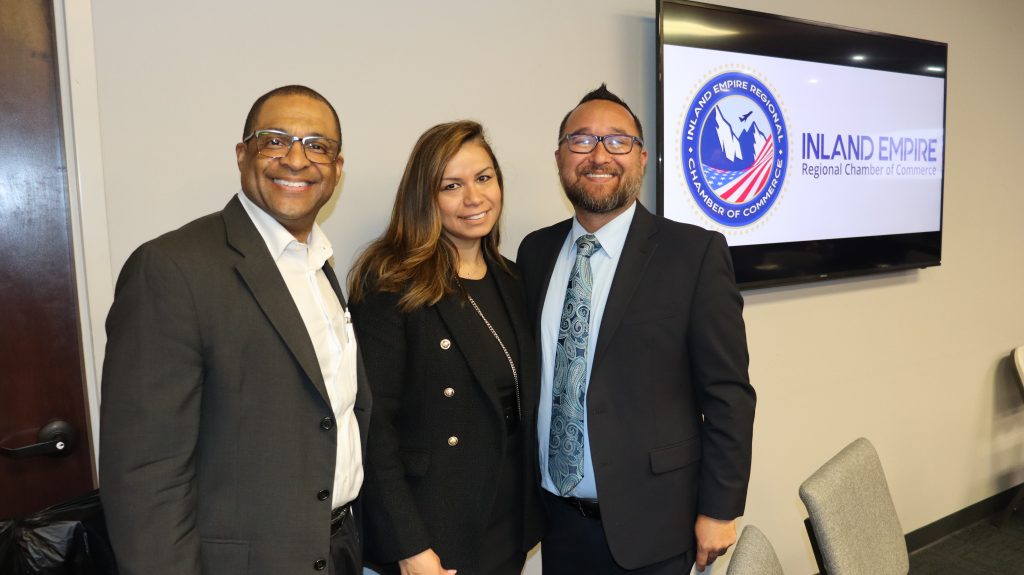

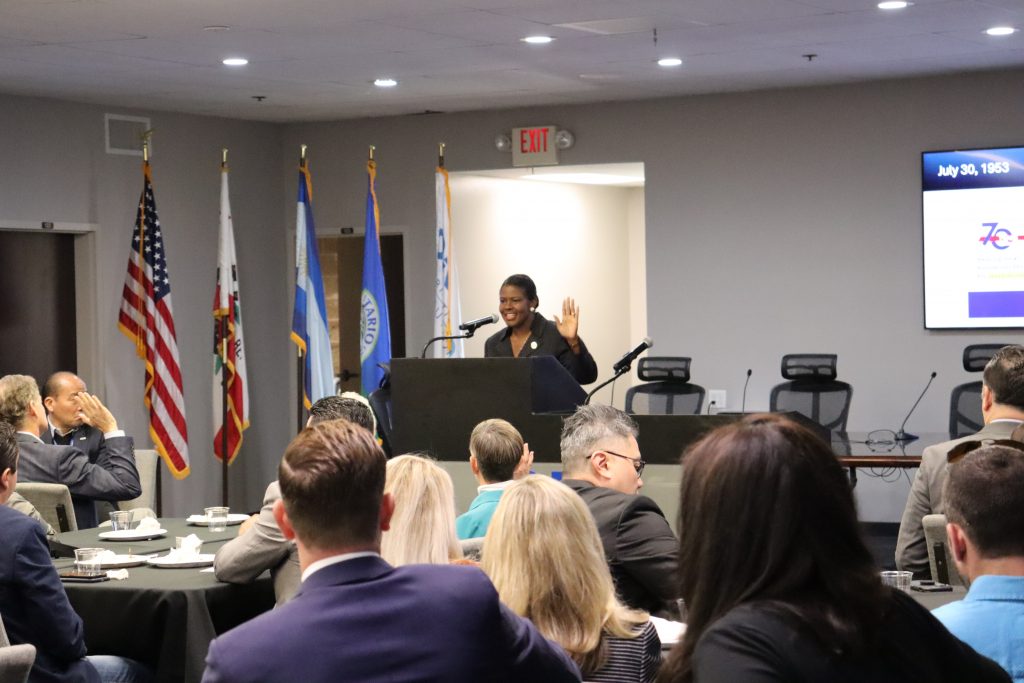
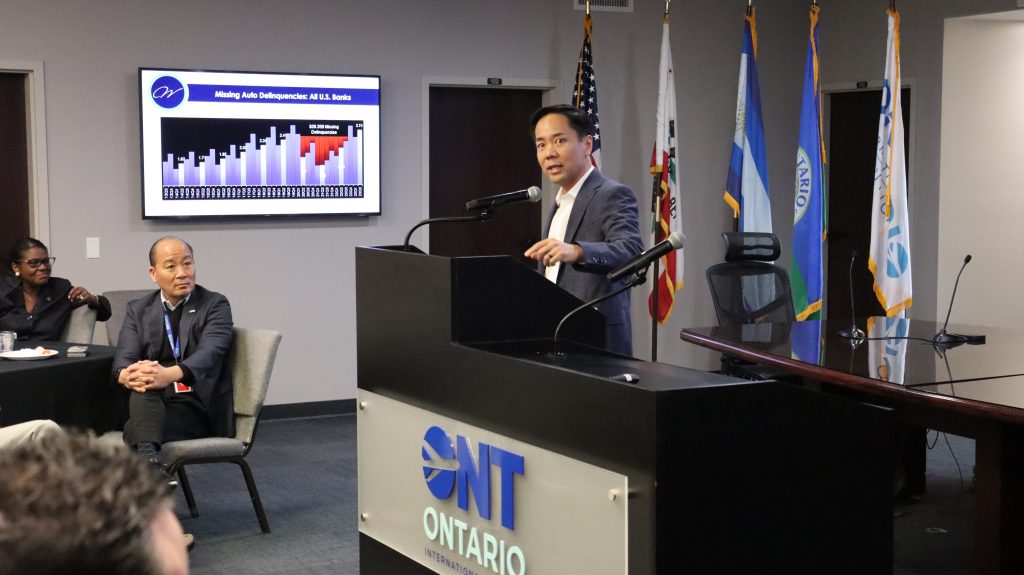
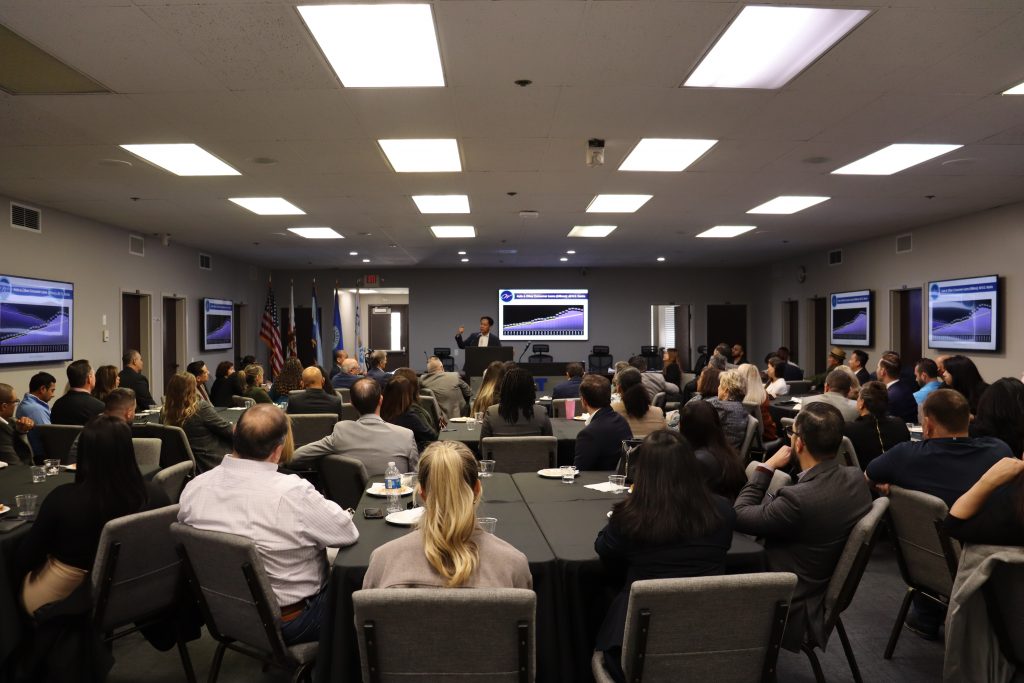
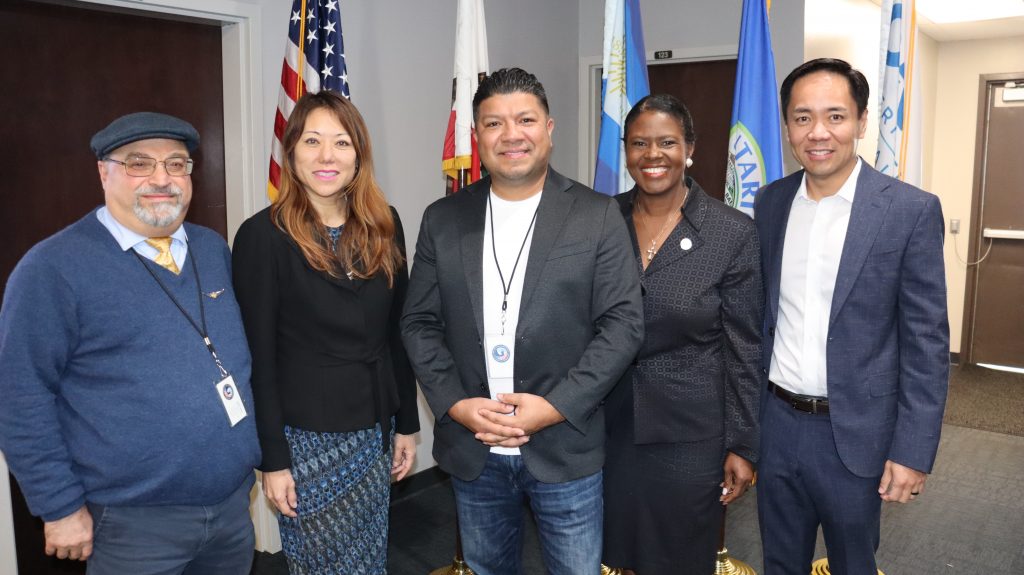
Hilda Kennedy, President & Founder of AmPac Business Capital, praised the event’s impact: “The Inland Empire Chamber did it again! They brought relevant, high-level content to help businesses plan for success in 2024. State Treasurer Fiona Ma and Ivo Tjan were exceptional! I agree with State Treasurer Ma, the Inland Empire region will save California.”
Christina Scranage, Business Development Manager at Keystone Advanced Solutions, reflected on the event’s value: “Grateful for the insightful conference today! The speakers provided valuable information, making me optimistic about our community’s economic outlook. Huge thanks to everyone involved for such an informative and helpful event!”
The event was highlighted by the participation of industry leaders who provided invaluable insights into the region’s economic landscape. The Financial Industry Update served as a crucial platform for networking, knowledge sharing, and exploring the challenges and opportunities facing the financial sector in the Inland Empire and beyond.
For more information about the event and the Inland Empire Regional Chamber of Commerce, visit www.iechamber.org.
-

 Opinion1 month ago
Opinion1 month agoSurge in Unemployment Among California Youth Linked to Minimum Wage Hikes
-

 Commercial Real Estate Transactions3 weeks ago
Commercial Real Estate Transactions3 weeks agoSRS Real Estate Partners Announces Record-Breaking $6.15 Million Ground Lease Sale of a New Construction Chick-fil-A Property in Murrieta, California
-

 Health & Wellness3 weeks ago
Health & Wellness3 weeks agoBuddha Bars: A Mother’s Innovative Solution to Healthy Snacking
-
By Press Release1 week ago
California Employment Expansion Continues But Still Trails Nation




